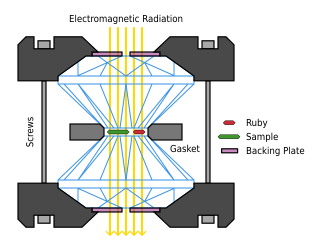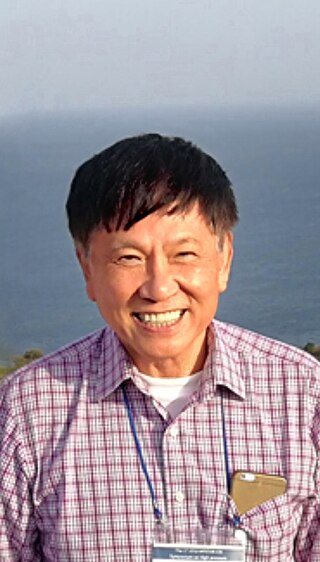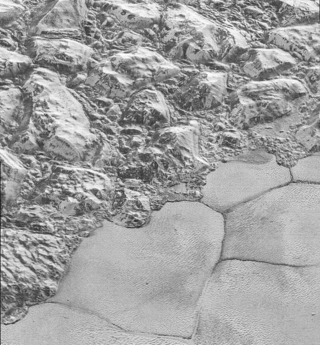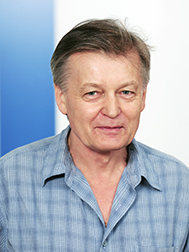Related Research Articles
Surface science is the study of physical and chemical phenomena that occur at the interface of two phases, including solid–liquid interfaces, solid–gas interfaces, solid–vacuum interfaces, and liquid–gas interfaces. It includes the fields of surface chemistry and surface physics. Some related practical applications are classed as surface engineering. The science encompasses concepts such as heterogeneous catalysis, semiconductor device fabrication, fuel cells, self-assembled monolayers, and adhesives. Surface science is closely related to interface and colloid science. Interfacial chemistry and physics are common subjects for both. The methods are different. In addition, interface and colloid science studies macroscopic phenomena that occur in heterogeneous systems due to peculiarities of interfaces.
Metallic hydrogen is a phase of hydrogen in which it behaves like an electrical conductor. This phase was predicted in 1935 on theoretical grounds by Eugene Wigner and Hillard Bell Huntington.

A diamond anvil cell (DAC) is a high-pressure device used in geology, engineering, and materials science experiments. It enables the compression of a small (sub-millimeter-sized) piece of material to extreme pressures, typically up to around 100–200 gigapascals, although it is possible to achieve pressures up to 770 gigapascals.

Ho-Kwang (Dave) Mao is a Chinese-American geologist. He is the director of the Center for High Pressure Science and Technology Advanced Research in Shanghai, China. He was a staff scientist at Geophysical Laboratory of the Carnegie Institution for Science for more than 30 years. Mao is a recognized leading scientist in high pressure geosciences and physical science. There are two minerals named after him, Davemaoite and Maohokite.
The Arthur L. Day Prize and Lectureship is awarded by the U.S. National Academy of Sciences "to a scientist making new contributions to the physics of the Earth whose four to six lectures would prove a solid, timely, and useful addition to the knowledge and literature in the field." The prize was established by the physicist Arthur L. Day.

The element sulfur exists as many allotropes. In number of allotropes, sulfur is second only to carbon. In addition to the allotropes, each allotrope often exists in polymorphs delineated by Greek prefixes.
Solid hydrogen is the solid state of the element hydrogen, achieved by decreasing the temperature below hydrogen's melting point of 14.01 K. It was collected for the first time by James Dewar in 1899 and published with the title "Sur la solidification de l'hydrogène" in the Annales de Chimie et de Physique, 7th series, vol. 18, Oct. 1899. Solid hydrogen has a density of 0.086 g/cm3 making it one of the lowest-density solids.
The Inge Lehmann Medal is given out by the American Geophysical Union to recognize "outstanding contributions to the understanding of the structure, composition, and dynamics of the Earth's mantle and core". The award was created in 1995 and named after seismologist Inge Lehmann who discovered Earth's inner core.
Mineral physics is the science of materials that compose the interior of planets, particularly the Earth. It overlaps with petrophysics, which focuses on whole-rock properties. It provides information that allows interpretation of surface measurements of seismic waves, gravity anomalies, geomagnetic fields and electromagnetic fields in terms of properties in the deep interior of the Earth. This information can be used to provide insights into plate tectonics, mantle convection, the geodynamo and related phenomena.

Robert Miller Hazen is an American mineralogist and astrobiologist. He is a research scientist at the Carnegie Institution of Washington's Geophysical Laboratory and Clarence Robinson Professor of Earth Science at George Mason University, in the United States. Hazen is the Executive Director of the Deep Carbon Observatory.
A hydrogen clathrate is a clathrate containing hydrogen in a water lattice. It is not possible to store commercial quantities of hydrogen by this method hydrogen in a hydrogen economy. A recent review that accounts the state-of-the-art and future prospects and challenges of hydrogen storage as clathrate hydrates is reported by Veluswamy et al. (2014). Another unusual characteristic is that multiple hydrogen molecules can occur at each cage site in the ice, one of only a very few guest molecule that forms clathrates with this property. The maximum ratio of hydrogen to water is 6 H2 to 17 H2O. It can be formed at 250K in a diamond anvil at a pressure of 300MPa (3000 Bars). It takes about 30 minutes to form, so this method is impractical for rapid manufacture. The percent of weight of hydrogen is 3.77%. The cage compartments are hexakaidecahedral and hold from two to four molecules of hydrogen. At temperatures above 160K the molecules rotate around inside the cage. Below 120K the molecules stop racing around the cage, and below 50K are locked into a fixed position. This was determined with deuterium in a neutron scattering experiment.
The Deep Carbon Observatory (DCO) is a global research program designed to transform understanding of carbon's role in Earth. DCO is a community of scientists, including biologists, physicists, geoscientists and chemists, whose work crosses several traditional disciplinary lines to develop the new, integrative field of deep carbon science. To complement this research, the DCO's infrastructure includes public engagement and education, online and offline community support, innovative data management, and novel instrumentation development.
Ultra low velocity zones (ULVZs) are patches on the core-mantle boundary that have extremely low seismic velocities. The zones are mapped to be hundreds of kilometers in diameter and tens of kilometers thick. Their shear wave velocities can be up to 30% lower than surrounding material. The composition and origin of the zones remain uncertain. The zones appear to correlate with edges of the African and Pacific large low-shear-velocity provinces (LLSVPs) as well as the location of hotspots.

Solid nitrogen is a number of solid forms of the element nitrogen, first observed in 1884. Solid nitrogen is mainly the subject of academic research, but low-temperature, low-pressure solid nitrogen is a substantial component of bodies in the outer Solar System and high-temperature, high-pressure solid nitrogen is a powerful explosive, with higher energy density than any other non-nuclear material.

Mikhail Ivanovich Eremets is an experimentalist in high pressure physics, chemistry and materials science. He is particularly known for his research on superconductivity, having discovered the highest critical temperature of 250 K (-23 °C) for superconductivity in lanthanum hydride under high pressures. Part of his research contains exotic manifestations of materials such as conductive hydrogen, polymeric nitrogen and transparent sodium.

Erskine Douglas Williamson was a Scottish geophysicist.
A polyhydride or superhydride is a compound that contains an abnormally large amount of hydrogen. This can be described as high hydrogen stoichiometry. Examples include iron pentahydride FeH5, LiH6, and LiH7. By contrast, the more well known lithium hydride only has one hydrogen atom.
Metallization pressure is the pressure required for a non-metallic chemical element to become a metal. Every material is predicted to turn into a metal if the pressure is high enough, and temperature low enough. Neon has the highest metallization pressure for any element.

Wendy Li-Wen Mao is an American geologist who is a professor at SLAC National Accelerator Laboratory. Her research considers the mineral physics of planetary interiors, new materials under extreme environments and novel characterisation techniques. In 2021 she was elected Fellow of the European Association of Geochemistry.
The Bridgman Award is a prize given every two years by the International Association for the Advancement of High Pressure Science and Technology (AIRAPT) for research in the physics, chemistry, or technology of high pressure science. The award is named in honor of Percy Williams Bridgman, Nobel Prize winner and famous pioneer of the physics of high pressure.
References
- ↑ CV, Russell J. Hemley
- ↑ Mao, Bell, Hemley Ultrahigh pressures: Optical observations and Raman measurements of hydrogen and deuterium to 1.47 Mbar, Physical Review Letters, vol. 55, 1985, pp. 99-102, doi : 10.1103/PhysRevLett.55.99 followed by numerous related studies, summarized in Mao, Hemley Ultrahigh pressure transformations in solid hydrogen, Reviews of Modern Physics, vol. 66, 1994, pp. 671–692 doi : 10.1103/RevModPhys.66.671
- ↑ Russell Hemley elected Honoris Causa Professor of the Russian Academy of Sciences | Carnegie Institution for Science, 9 July 2008
- ↑ Russell Hemley Appointed Director of Carnegie's Geophysical Laboratory, carnegiescience.edu, 5 February 2007
- ↑ Russell J. Hemley and Ho-kwang Mao, 2005 Balzan Prize for Mineral Physics
- ↑ Russell J. Hemley, Member Directory, National Academy of Sciences